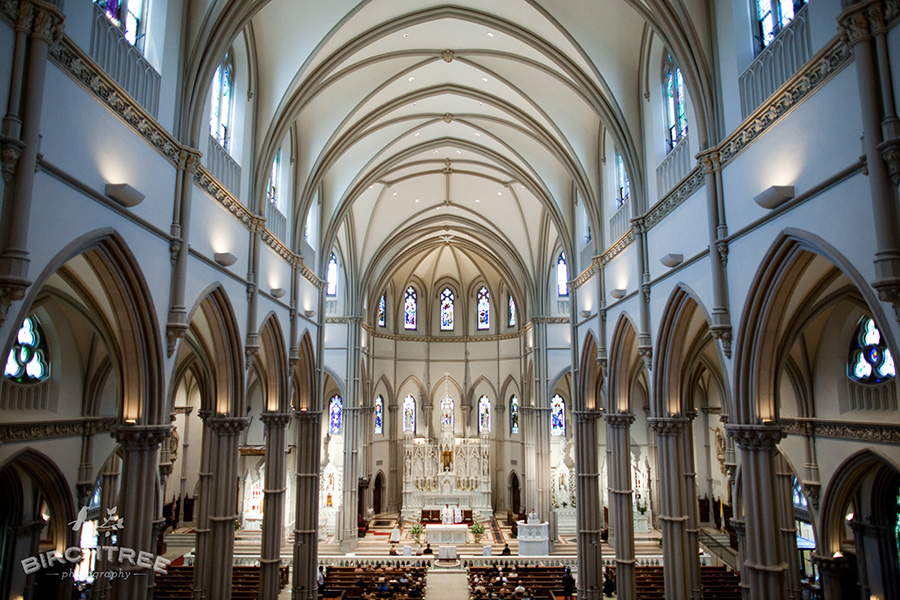The process of planning a wedding is filled with many details and hundreds of steps, each important in their own right. But it’s easy to loose track of certain things as you get more and more into the thick of it.
One of those items I think that is often overlooked but certainly crucial to your photographs is your venue’s restrictions on photography and/or videography. Generally, this doesn’t apply to your reception venue–most hotels, country clubs, outdoor locations, you name it, couldn’t care less about what your photographer does. But you’ll find a very different story when it comes to your ceremony location, particularly if it’s a church or other religious venue.
That’s right, a lot of these locations have strict guidelines for photographers and videographers, detailing what they can and cannot do. You may envision a photo of your face as you look into your fiance’s eyes at the altar, but your church may insist that your photographer stand at the back of the building for the entire ceremony. Even the best telephoto lens will only lend a profile shot of your face. And while I haven’t encountered a venue quite so strict here in Pittsburgh yet, I know there are venues out there who don’t allow photographers to take any photos during the ceremony, regardless of where they stand. That’s right, you’d have no photos of your ceremony.
Hopefully, venues are outlining their photography guidelines to prospective brides, so brides know well in advance what to expect. But, I have a feeling that some may not…or they may quickly go over it and the bride soon forgets about it.
As a photographer, I have to abide by the venue’s restrictions–or risk being kicked out and barred from ever shooting there again. If the church says no flash photography (not that I use it that often), I can’t use a flash during the ceremony. If they say I must stay behind the last seated guest during the ceremony, then I have to stay behind the last seated guest. From experience, I don’t think every bride understands their venue’s restrictions. Personally, I talk with the priest or layperson in charge before every wedding and discuss restrictions to make sure I know exactly what is and what isn’t allowed. There’s been times I’ve been told something different than what the bride has told me, indicating that she probably wasn’t aware of her venue’s restrictions. It’s definitely no fun to find these restrictions out on your wedding day, especially if you’ve been expecting something different.
So what should you do?
Well, the first thing you should do when researching ceremony locations is to ask them about their photography restrictions. Make sure you understand what they entail. Secondly, you have to decide if the beauty or personal appeal of a location outweighs the specific restrictions. Again, most places in Pittsburgh are fairly reasonable, but any restrictions will affect the photos to some degree. And lastly, it’s worth asking if some of the restrictions can be overlooked. They may still say no, but then again, you may persuade them to ease up a bit.
I understand that many people choose a specific church because it’s where they grew up or it has a particular significance to them or their family. They are going to have their wedding there no matter what. And that’s certainly fine! I completely understand that. However, I do still encourage couples to know what restrictions their location has and understand that it will affect the kind of photographs I can take. As long as they know that going into it, then there’s no room for disappointment or surprises at a later time.
And lastly, just to clarify, I’m happy to work with whatever guidelines I’m given…and I certainly respect the significance of the wedding ceremony. My goal, regardless of restrictions, is always to be unobtrusive and to capture great moments without drawing attention to myself.


by mary